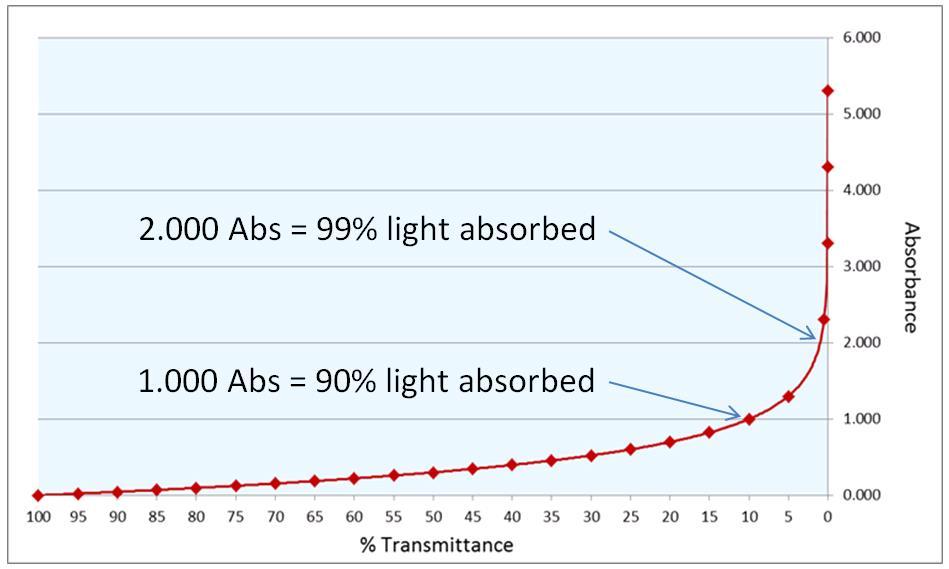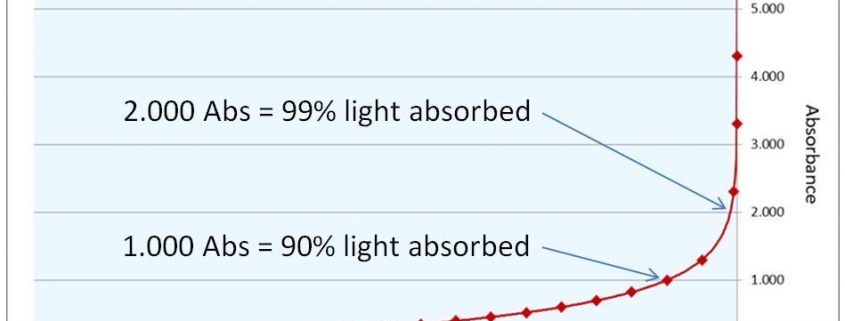Tip: A closer look at absorbance
Absorbance readings taken from spectrophotometers during enzymatic analysis should be considered carefully before they are used to calculate important wine parameters.
Many spectrophotometers have a photometric range up to about 3.0 absorbance, but this does not necessarily mean that any value up to 3.0 is an accurate reading.
Spectrophotometers don’t directly measure absorbance, they actually measure the light that is not absorbed by the sample and transmitted to the photometer. The relationship between absorbance and transmittance is exponential, at an absorbance of 1.0, 10% of light gets through the sample and is detected. At an absorbance of 2.0, 99% of light is absorbed and only 1% of light is detected. When measuring very low levels of transmitted light, even small variances in photometric accuracy can have a big impact on the final result.
As a rule of thumb, it is prudent to accept absorbance readings below 1.5 units only.
Dilution factors, red wine decolourisation and sample clarification are some of the factors to consider when preparing enzymatic assays.




